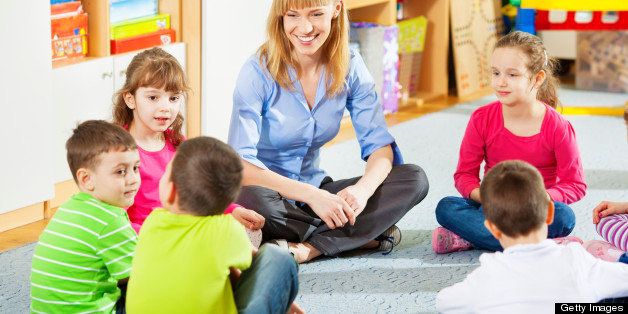
In 2006, I took my then-nine-year-old daughter, Emma to see Happy Feet, an inexplicably popular animated movie about a tap-dancing penguin confronting man-made environmental destruction. I guess a lot of people liked that film, but we left in dismay. She knew exactly why: "I hate when adults put all this pressure on kids! 'Save the Planet.' 'Save the Rain Forests!' I'm a child. How am I supposed to do that?"
I've thought about Emma's comments for years, and totally agree. In trying to instill social responsibility, many adults forget how powerless children can feel, and thus, large-scale instructions ("Save the Whales!") overwhelm or fall flat. Yes, I think we must teach children to protect each other and the earth. I just don't think that hammering broad-brushed messages home -- "If you don't stop pollution these penguins will die"-- is the way to do it.
Fast Forward
This past June, I was in my car with my six-year-old son, taking him to kindergarten and myself to another school where I was to speak about homelessness. I had never before addressed schoolchildren and was kind of excited to realize I had, strapped in behind me, a captive focus group of one.
I pointed to a full backpack on the seat beside me. "Hey," I began. "Look at this backpack. Imagine that everything you own, everything in the whole world, was in this bag." I glanced at him in the rear view mirror; he squinted at me. "My room wouldn't fit," he said flatly. "No, it wouldn't," I replied. "But what if everything you owned had to fit into this bag?" I asked. "What would you put in it?"
"Strawberries and Legos, duh," he answered, looking out the window as I began to fret about my upcoming lecture.
When I got to the elementary school, dozens of children sat squirming on the auditorium floor. After a few introductory words about homelessness, I walked through the room dangling the backpack, unzipped, letting random children pull out and describe what they found.
A girl in a pink bedazzled t-shirt was first. She reached in the bag, brandished her item. "Toothpaste!" she shouted to the crowd. A hand immediately went up in the row behind her. "Where do they have a sink to use it?" the child asked. "Where do you think?" I asked back. "Ummm... gas stations? Restaurants?"
"Yes! Good guesses!" I told her. "At Bethesda Cares, we have a bathroom and a shower available through our Drop-In Center, which helps. But you've nailed it, hygiene is a big problem. Even if you have soap and shampoo, if you don't have a home, you need to figure out where you can go to use them."
A brown-haired boy missing both top front teeth was next to reach into the bag. He held up his item: "A granola bar!" "Yep," I said. "Food. That's another big problem for someone experiencing homelessness. We all need food. But it's hard, when you don't have a kitchen to prepare or store it." The boy thought a moment. "Can't they carry little stoves, like for camping, with them?"
Before I could address fire safety, one of the teachers interrupted, distressed. "Oh. Man. We held a canned food drive for you. How will your clients open the cans?" I said we would use the food at our free lunch program, or we would give out can openers -- donated by other supporters -- along with the food. She looked relieved.
But the children looked dismayed. The impossibility of steady meals, without kitchens, was sinking in.
Next from the bag came a thick pair of socks, leading to a discussion of what it might be like to sleep outside, regardless of the weather. "I wouldn't like it," a little girl announced. "I'd be cold, and scared." The children around her nodded in agreement.
This seemed a good time to wrap things up. The teachers had set up tables in the back of the room where the children would next assemble snack bags of raisins, Cheerios and such for our clients. As I recapped what we'd just learned about people experiencing homelessness, one girl held her hand up to speak, so steadily, so desperately that I had to let her speak. "Aren't your customers unhappy?" she asked. "Don't they miss their families? Aren't they lonely and sad?"
Silence descended in the room as those painful words landed. "Well, yes," I said. "Probably, yes. A lot of them probably are pretty sad." As I watched emotions wash over the children, threatening to overwhelm, a very clever teacher jumped up. "That's where we come in, children! Let's draw labels for these snack bags, and that will be our way of making sure that they know that they're not alone." And that's what they did: View image
Their gesture was small, but it was tangible, and meant something to them. I thought it would mean something to our clients, too. As I left the auditorium, my feet felt noticeably happy.
